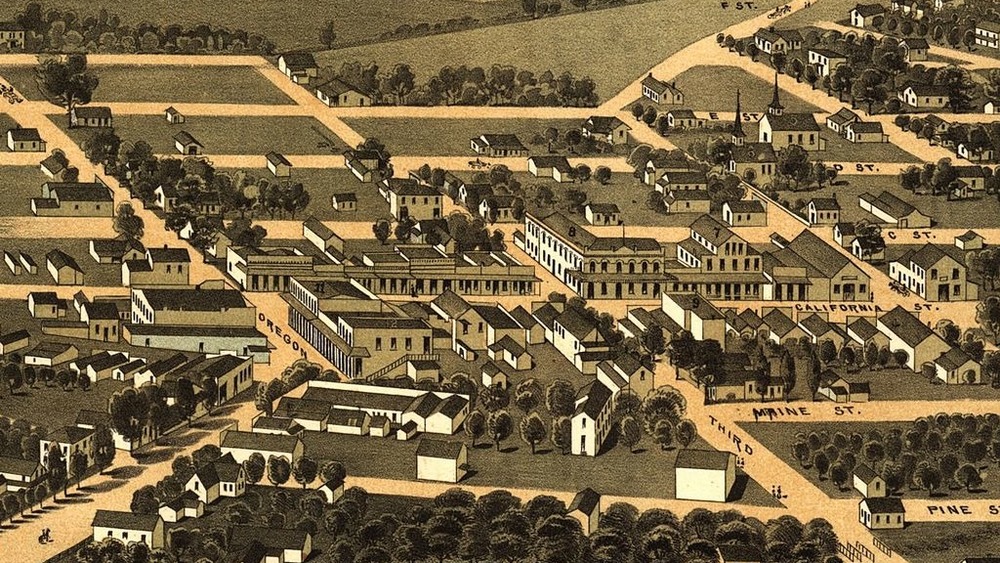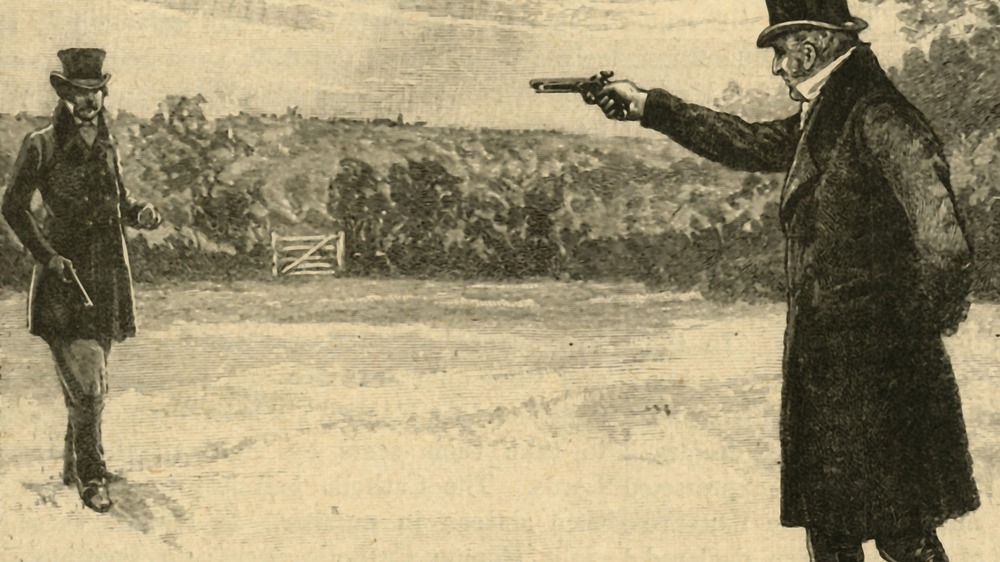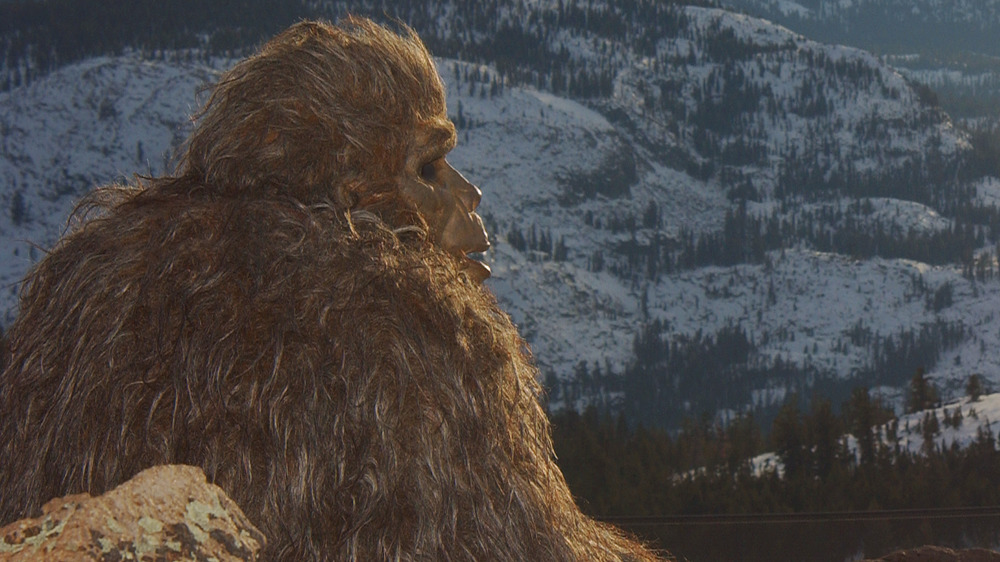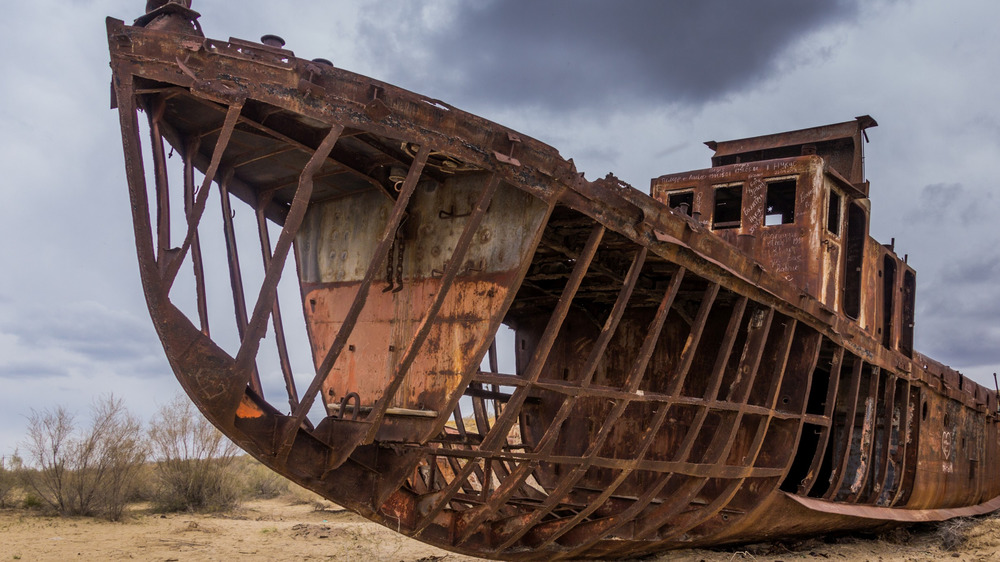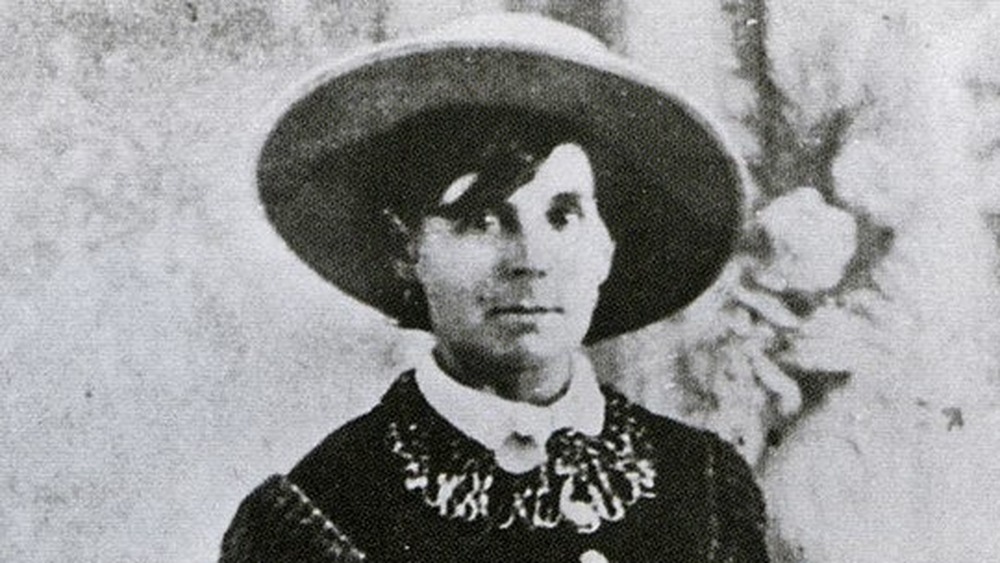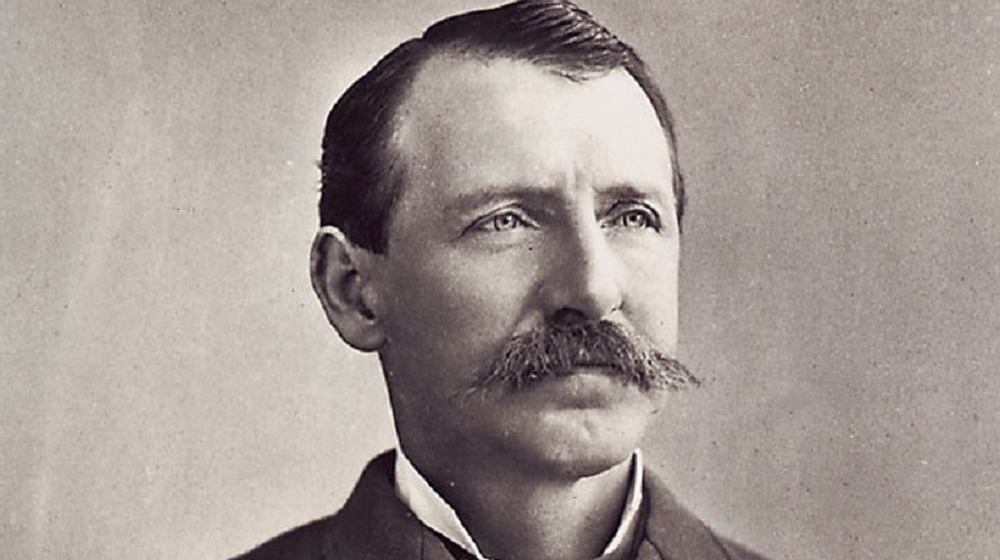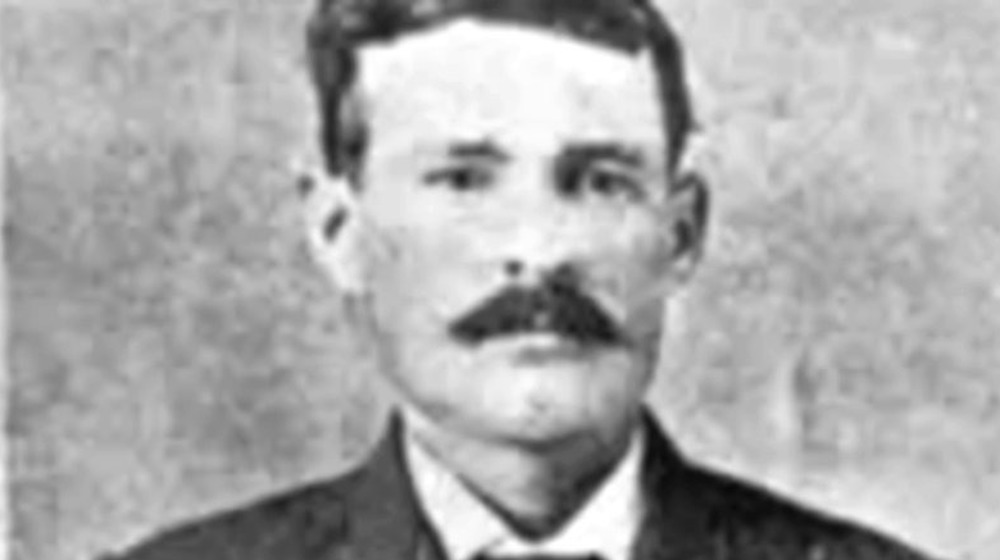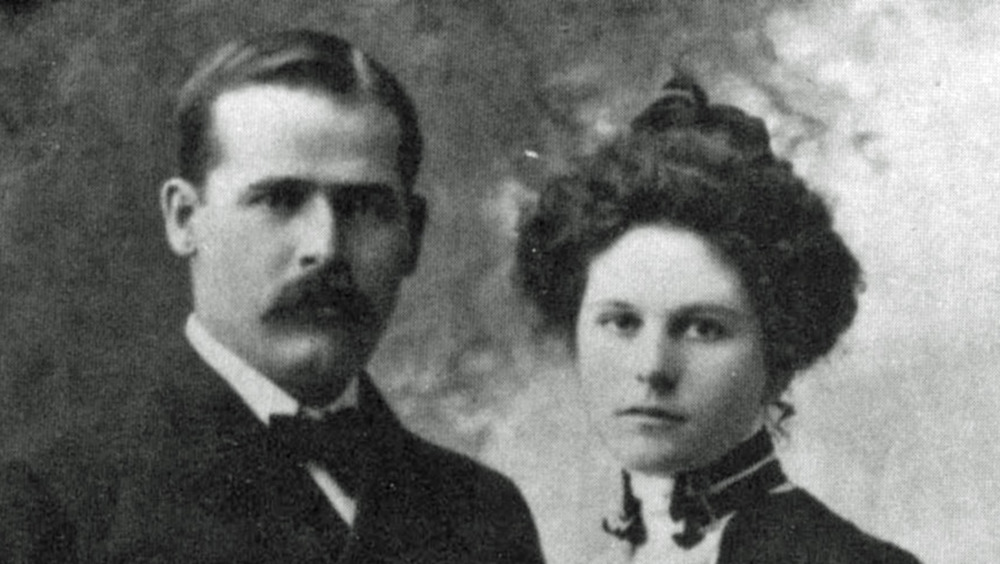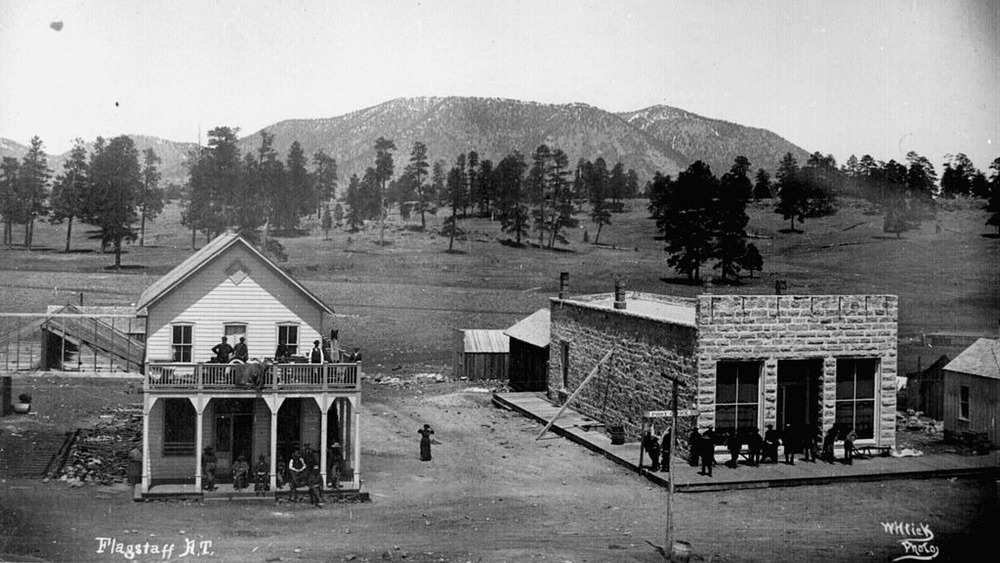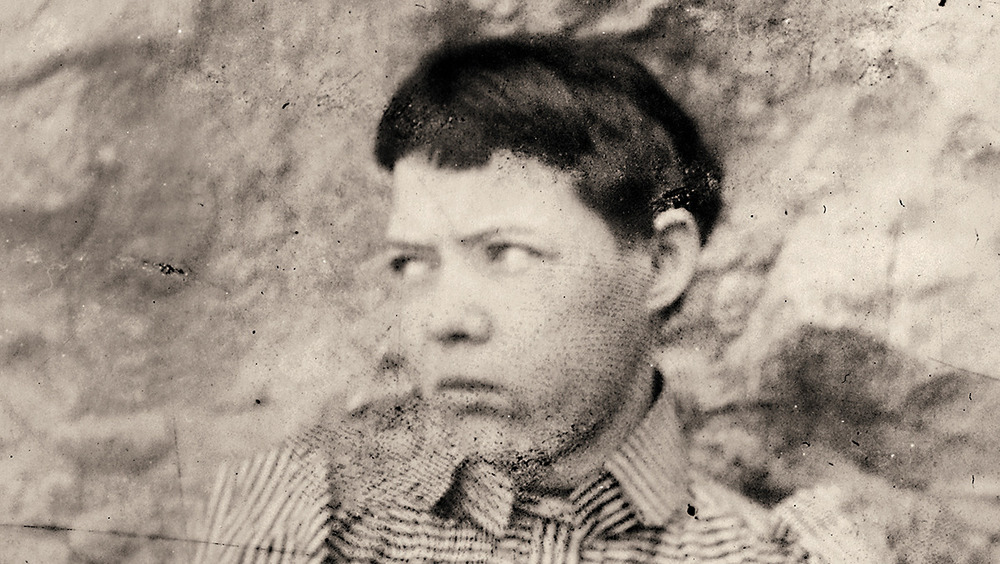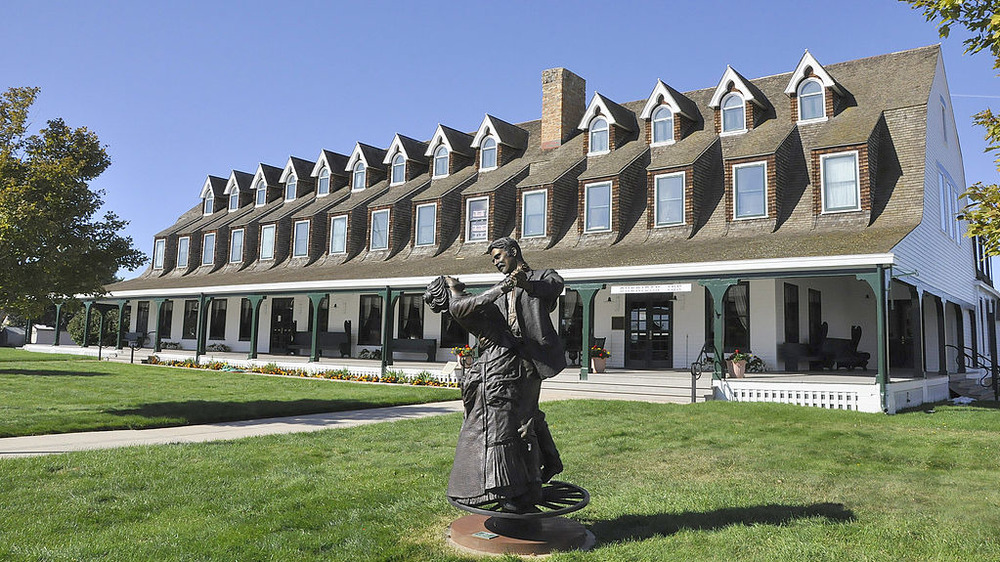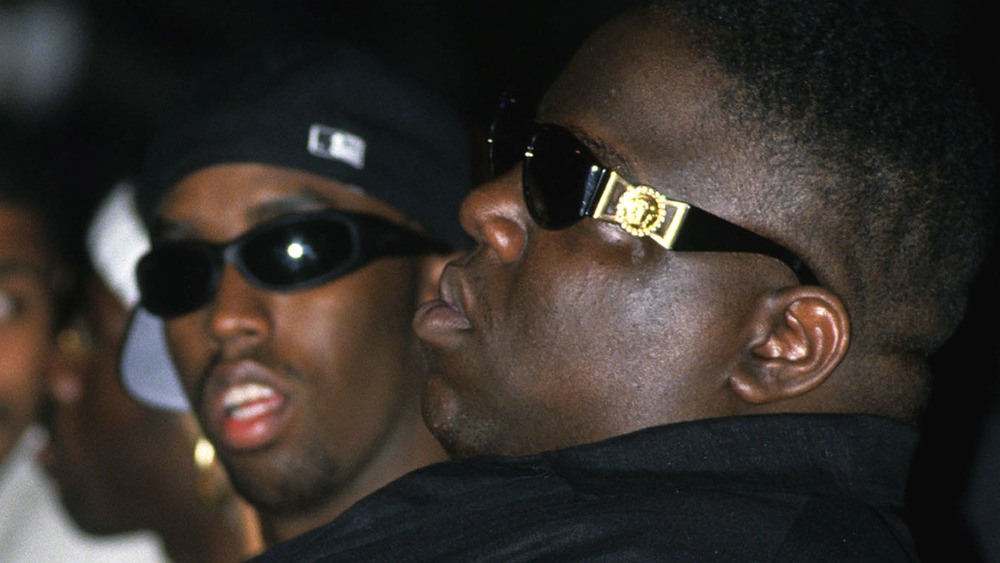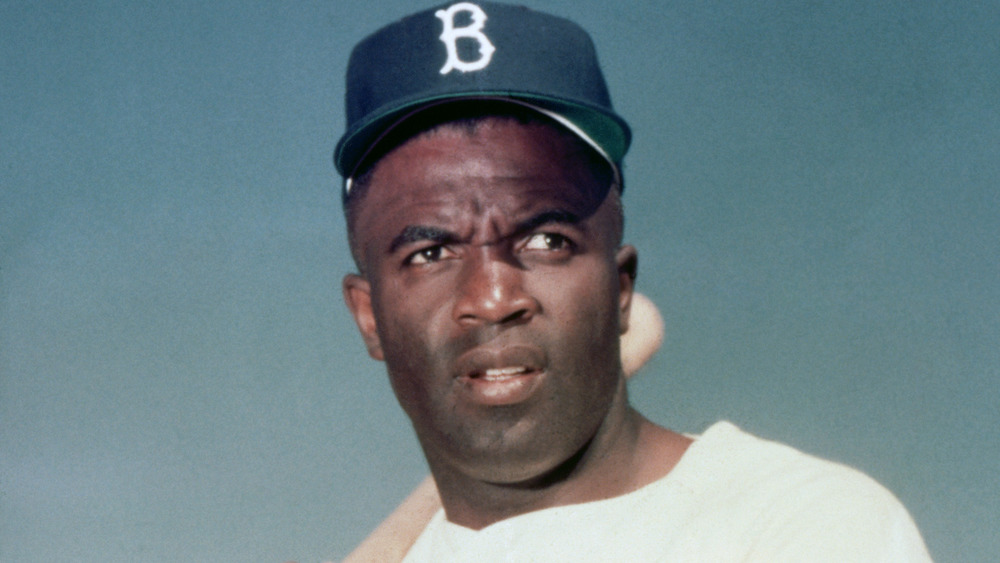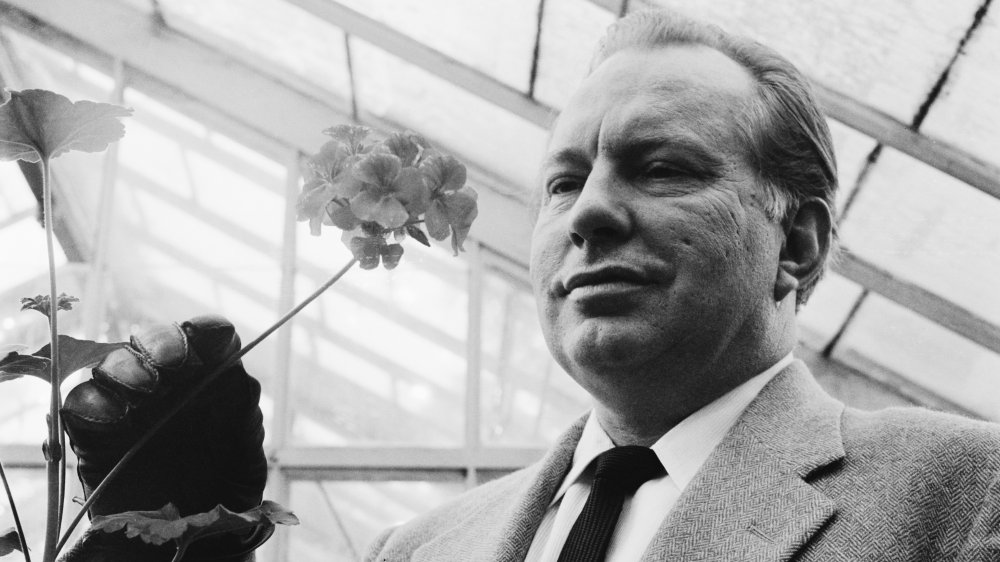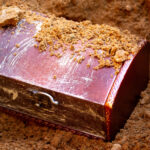
The Most Bizarre Unsolved Mysteries Of The Wild West
Lost treasures. Unsolved murders. Disappearances. These stories continue to intrigue history lovers of the Old West. Why are mysteries that happened a century or more ago so intriguing? Because there is always a chance that modern technology, new information, or just plain luck might help solve the case, and wouldn’t that be glorious? IFL Science rightfully credits “scientific understanding,” which includes tracing people through DNA and “21st century medicine” to solving some of the most intriguing mysteries of the past. Forensic Colleges credits the first female police captain in the United States, Frances Glessner Lee, as being evolutionary in the advances of forensic science, using medical professionals over coroners.
There are plenty of unsolved mysteries out there yet. How can you solve a murder without a body? Is it possible to find hidden treasure without a good map? It’s very difficult to find someone who “disappeared” in the 19th century, seeing as today’s standard identification, the driver’s license or state identification, did not include photographs until 1958, according to Automobile. It can be done, however. Just last year the New York Post reported that authorities were able to identify the body of outlaw Joseph Loveless, who was killed around 1916 but wasn’t found until 1979. If you’re in the mood for a mystery, read on for some of the craziest unsolved mysteries from the Wild West.
The Lost Cabin Gold Mine is guarded by skeletons
This story begins in the gold mining town of Jacksonville, Ore. (pictured). In 1853, writes Oregon historian Finn J.D. John, brothers James and Henry Wilson set out with a group of prospectors looking for gold. After one of the men was killed by rogue Native Americans, the Wilsons trudged on alone. They eventually found a valley surrounded by steep cliffs and built a cabin, and Henry discovered a nearby creek chock full of gold nuggets. With winter and the dangerous natives on their minds, the boys dug a rock-lined hole in the floor of the cabin, deposited their treasure, and covered it with two flat stones.
The brothers no sooner set out for civilization when the natives reappeared and killed Henry. James escaped to northern California. He was in very ill health, writing his cousin, Ted Harper, before dying. Fifteen years later, Harper and an alcoholic poet, Sam Simpson, went looking for the cabin. All they found were burned ruins with Henry’s body inside, right as Harper allegedly accidentally shot himself and died! A shaken Simpson returned home sans the gold. Later that year, another group of men went looking for the mine, according to Crater Lake Foundation. They of course found nothing, but they did discover a national treasure – Crater Lake itself, the deepest known lake in America.
The mysterious duel of Alfred Schlesinger
In September 1876, the Colorado Daily Chieftain reported a most curious case – Dr. S.E. Solly, a prominent physician in Colorado Springs, Colo., said that he had received some mysterious letters from Alfred Schlesinger. At the time, the young man was employed by Colorado Springs and Denver & Rio Grande Railroad founder William Jackson Palmer. The British-born Schlesinger had been Palmer’s private secretary since April. Schlesinger’s letters explained that he had gone to participate in a “fight” at the Lawson Ranch some 15 miles away. If he did not return, Schlesinger wrote, Solly was to come find his body.
Sure enough, Solly and others went to the ranch and found Schlesinger laying face down in the dirt, with “a pistol by his side and a white pocket handkerchief.” And a bullet hole through his heart. He was only 19 years old. A line was drawn in the dirt as if for a duel, but Schlesinger wrote that he had promised not to reveal his adversary for two years — if he lived. News of the death traveled as far away as Minnesota, and a reward was being gathered for the arrest of his killer, but all for naught. Schlesinger rests in Colorado Springs’ Evergreen Cemetery today but is said to haunt two prominent landmarks from his time, Briarhurst Manor and Glen Eyrie.
Bigfoot in the Wild West
Modern-day Bigfoot tales aside, the big hairy guy has actually been alive and well since the 16th century, says Legends of America, when native tribes reported seeing the great “Sasquatch.” History says there are actually Bigfoot stories from all over the world. In the American west, various newspaper stories from the 1800s, according to Cowboys & Indians, “are brimming with giant wild men, [and] wood apes” who look and sound like the Bigfoot everyone has come to know and love. Oh yeah, and they stunk back then just like they are said to today. In Spokane, Wash., says Crosscut, they actually call Bigfoot the “Bad Smelling Tree Man.”
The Oregon Encyclopedia says that ethnographer George Gibbs first started recording native stories of Bigfoot in the state as early as 1865, although the first official record of sightings was not made until 1904 when one was seen around Sixes River on the southern coast. Bigfoot Field Researchers Organization (BFRO) started recording sightings in each state online in 1995. As of this writing, Washington state leads with 690, followed by California with 454, and Florida with 333. Colorado has only 129 recorded sightings, but enough have been reported to merit posting a warning sign on Pikes Peak, according to Woman’s Day. If you happen to see a Bigfoot, you can report it on the BFRO site, which makes for fascinating reading.
The Spanish ship in the desert
In 1540, according to Desert Sun, Spanish explorer Hernando de Alarcón sailed up the Colorado River to today’s Yuma, Ariz.. But did he make it further? Some 100 miles southeast around the Salton Sea, folks began reporting a Spanish ship stranded in the California desert. Desert USA wonders if it was actually a treasure ship piloted by a man named Iturbe, which was actually in the Salton when it was stranded by a mudslide. Around 1775 a mule driver for explorer Juan Bautista de Anza said he saw the vessel and even carried away some of the treasured pearls he found aboard.
Next, explorer Albert Evans claimed to have found “the wreck of a gallant ship” in 1870. Later that year Charley Clusker, says the Vintage News, also found the galleon — a story backed by Philadelphia’s Evening Telegraph. Clusker later disappeared. Others doubt there is a ship – American Cowboy says one idea that a massive tidal wave stranded the ship is folklore, although others submit it could have really happened. One Lawrence Justus was so convinced the story was true that in 1974, he tried obtaining a permit from Anza-Borrego Desert State Park to look for it. Authorities refused the request, but a file at the park contains a picture of Justus, “who reportedly found the Lost Ship of the Desert.”
The servant girl annihilator
Between 1885 and 1886, according to Austin Culture Map, eight ghastly murders in Austin, Texas, were attributed to a serial killer. Of the victims, most were “servant girls.” Only one lived but her daughter, as well as the companion of another victim, were killed. PBS notes that six of the victims were Black. So were three women who were attacked in July, August, and November, says Servant Girl Murders, but they survived. Then Mollie Smith’s axe-mutilated body was found next to an outhouse in December. The murders were quite grisly. In May 1885 another victim, Eliza Shelly, was found with her head “almost completely split.” The killer was brutal, assaulting his victims with knives, axes, rocks, and even an iron.
The write O. Henry dubbed the murderer the “Servant Girl Annihilator,” as Austin’s Weekly Statesman commented, “The heart sickens at these repeated details of horrid, merciless crime.” Next, Irene Cross, Clara Dick, and Rebecca Ramey and 11-year-old Mary Ramey were attacked. Only Rebecca survived. The next victims, according to the Fort Worth Daily Gazette, were Gracie Vance and her paramour, Orange Washington. Two more women who were not domestics, Sue Hancock and Eula Phillips, were murdered on Christmas Eve 1885. In February 1886, police killed Nathan Elgin, who was beating a saloon girl to death. The attacks stopped, but Elgin was never proven to be the Annihilator.
Belle Starr's murderer was never caught
On Feb. 3, 1889, says History, the notorious “Bandit Queen” was murdered by an unknown assailant in Oklahoma. Pryor to that time, the one-time good girl had gone through a string of bad men — outlaws Cole Younger, Jim Reed, Sam Starr, and Jim July, all of whom Belle Starr aided in horse-thieving and robbery. She even served time in prison, all while bearing children and living on the lam due to her various escapades. Legends of America notes that Belle’s relationship with July was “particularly stormy,” to the extent that the man once allegedly offered to pay someone to kill her. Still Belle remained faithful, accompanying July to Fort Smith, Ark., to answer charges of horse stealing. But then she inexplicably turned back.
The Dallas Morning News flamboyantly claims that as she traveled down a lonesome road towards home, Belle was “shot in the back over 60 times.” Closer to the truth is History Net’s story that Belle was shot only twice as her horse bolted home and alarmed her daughter, Pearl. Findagrave says she was taken home, dying an hour later, and was buried in her own front yard. Who killed her? The suspects ranged from July to a disgruntled neighbor named Watson to Belle’s own son, Ed, or maybe even Pearl. Of these only Watson was tried but was found not guilty.
What happened to Albert and Henry Fountain?
Albert Jennings Fountain, according to Findagrave, was many things — an Army Lieutenant, attorney, newspaperman, and senator. Until his disappearance he was best-known as the trial lawyer for Billy the Kid, who lost his case. In 1896, Fountain and his young son, Henry, were in Lincoln, N.M., for the rustling case against cattle baron Oliver Lee, per Socorro County Cold Cases. Desert USA says author A.M. Gibson verified Fountain had many enemies at the trial, including Lee. No wonder Fountain “had the feeling of being closely watched” while in Lincoln. And after receiving a threatening note as the trial ended, the Fountains immediately started for home 150 miles away.
Two days later the pair disappeared, according to True West. Only Fountain’s wagon was found, along with pools of blood, bullet shells, and Henry’s handkerchief. Even famed sheriff Pat Garrett got involved, to no avail. Although Lee’s hired hands were eventually tried, they were found not guilty. Two confessions came later — one by James Gilliland in 1937, and one in 1949 when convicted outlaw Sam Ketchum claimed on his deathbed that it was he and his brother, Tom “Black Jack” Ketchum, who killed the Fountains. But the bodies weren’t where the men said they were. The Fountain case remains the most famous cold case in New Mexico history.
Black Jack Ketchum's hidden loot
Tom “Black Jack” Ketchum may not have killed Albert and Henry Fountain, but he was certainly found guilty of numerous robberies and murders before he was sentenced to hang in 1901, according to Legends of America. There are at least two stories about Ketchum stashing treasure in the years before he died. The first is that he “buried a large treasure” in Wild Cat Canyon in the Chiricahua Mountains of Arizona, according to Metal Detecting. More specifically, writes William Ascarza in his book Chiricahua Montains: History and Nature, Ketchum “stashed several thousand dollars” in a cave, which has been referred to as “Room Forty Four.”
Payson historian Jinx Pyle offered a second story for Discover Gila County. A posse was chasing Ketchum following a robbery in Camp Verde when the outlaw lassoed himself and some $4,000 in stolen loot to a branch high up in a tree somewhere around Battle Ground Ridge. Four days later when the coast was clear, Ketchum came down and headed towards the Myrtle Ranch, possibly hiding his cache between there and Gilliland Gap. Neither stash has been found as far as anyone knows. Today Ketchum is best-remembered for his death by hanging in Clayton, N.M. The Vintage News reports that when the trapdoor swung open at the gallows the outlaw fell further than he should have, yanking his head clean off.
What really happened to Etta Place?
History buffs love debating about whether Butch Cassidy and the Sundance Kid really died in Bolivia. But the real mystery is what became of their companion, Etta Place. Not even Pinkerton’s Detective Agency knew her real name, although they could describe her, according to Legends of America – “classic good looks, 27 or 28 years old, 5’4″ to 5’5″ in height, weighing between 110 and 115 pounds, with a medium build and brown hair.” But that could be about any woman in the Edwardian era. Everything else about Place is purely speculation. Was she a schoolteacher? Or a harlot from a Texas bordello? Or maybe even Sundance’s cousin, according to Criminal Element? Nobody knows for sure.
It is a fact that Place loved Sundance enough to accompany he and Cassidy to South America. For a couple of glorious years, according to True West, the trio “robbed numerous banks, and intercepted one mule train after another carrying gold and paper money.” Although Place was supposedly killed along with her outlaw men by Bolivian soldiers, others point out that she was later seen back in America both with and without Sundance. Historian Anne Meadows maintains that Sundance took Place to San Francisco for a final time in 1905. She was also identified as the woman seeking “documents declaring Sundance dead” there in 1909. Whoever she was, Place took her secret to her grave.
The gruesome unsolved murder of madam May Prescott
In 1916 the Coconino Sun in Flagstaff, Ariz., reported a most chilling find — alerted by a terrible odor, authorities found the bodies of madam May Prescott and her husband Fred in a bedroom at their home. Fred’s throat was slashed ear to ear. He’d been stabbed in the back and shot in the head. May’s throat also was cut, and she had been shot twice. The blood-splattered, bullet-scarred bedroom had been set on fire. Fred also held a gun with one bullet fired and had left a note that he had violently quarreled with May before shooting her and then himself. How does a man with his throat cut wide open shoot himself in the head and set a fire?
For weeks, the coroner poured over tons of evidence. The jury finally concluded that the couple died from “knife and gunshot wounds caused by the hands of unknown party or parties.” The case was never solved. Surprisingly, although a portion of the Prescott’s home remains under the facade of today’s Grand Canyon International Youth Hotel, it is not mentioned on Flagstaff Downtown’s list of haunted locations. According to Quinta Scott’s book, Along Route 66, the house was purchased by K.J. Nackard soon after the murders, who actually lived in it and eventually built his Downtowner Auto Court around it.
The disappearance of Pearl Hart
A true wild child, Pearl Hart was a Canada native whom Annals of Crime says made it through finishing school before making a series of life mistakes. She was 17 when she was “seduced” by gambler Fred Hart, who remained in the girl’s life until 1898. Tired of supporting her and two children, according to Legends of America, Fred beat her up and split. The next man in Pearl’s life, Joe Boot, was her final undoing. The two embarked on a life of crime but were caught in 1899. Boot was sentenced to 30 years in prison (and later escaped), while Pearl got five years.
The public now took interest in the woman bandit who dressed like a man. In prison she not only signed autographs but also began spreading the gospel. Pearl was finally paroled — because she inexplicably became pregnant while in prison. Gov. Alexander Brodie pardoned her in 1902, says Spartacus Educational. What happened to her? It’s hard to say. The Vintage News says she tried performing onstage as a “Lady Bandit” before being arrested in Kansas City for buying stolen goods. She was arrested again in 1904, after which she wasn’t seen again until 1924 in Florence, Ariz. Various sources say she died in 1925, or sometime in the 1950s, or even as late as the 1960s. But nobody knows for sure.
Where are Kate Arnold's ashes?
When it opened for business in 1893, according to Legends of America, the elite Sheridan Inn in Sheridan, Wyo., even offered electricity. Showman “Buffalo Bill” Cody was on hand at the grand opening and actually purchased the hotel a year later. His selling of the hotel in 1901 coincided with the hiring of Catherine “Miss Kate” Arnold, just in from her native Virginia, according to the Sheridan Inn. By the 1910 census Arnold had moved into the inn, where she worked as a seamstress, “desk clerk, housekeeper, hostess and sitter for the many children who stayed at the Inn with their families.” And she loved her job.
During her time at the Inn, Arnold met such famous guests as Ernest Hemingway, President Herbert Hoover, Bob Hope, and Will Rogers. Only in Your State says Annie Oakley stayed there too. Amazingly, Arnold remained in the Sheridan’s employ until 1965, when the building was to be torn down. But the Sheridan Historical Society was able to save it, and when Arnold died in 1968, she requested her ashes to be interred in the wall of her room, 306, on the third floor. Following a “small ceremony” in the room, her ashes were interred in the wall. Funny thing is, today nobody seems to know exactly where in the wall the ashes are. Cowboys and Indians maintains that Arnold’s spirit is ever present, and guests enjoy staying in her room.

The Messed Up Truth Of Rats In New York City

Here's What Would Happen If Antarctica Melted
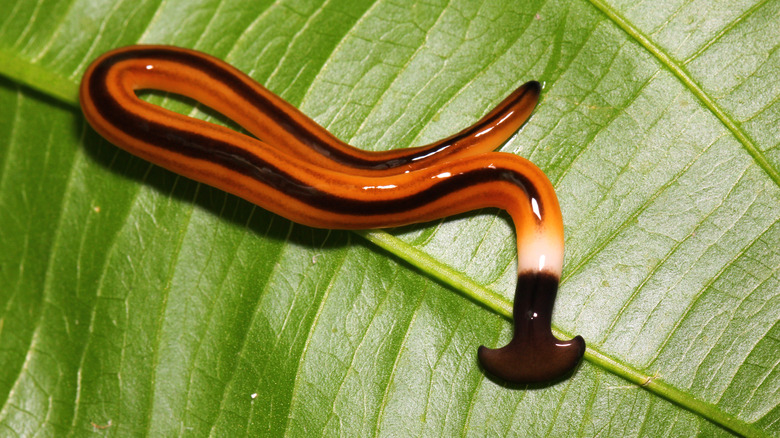
This Is What Makes The Hammerhead Worm So Horrifying

Here's Why This Town Forbids The Burials Of Bodies

The Reason Key West Made An Ordinance About Chickens
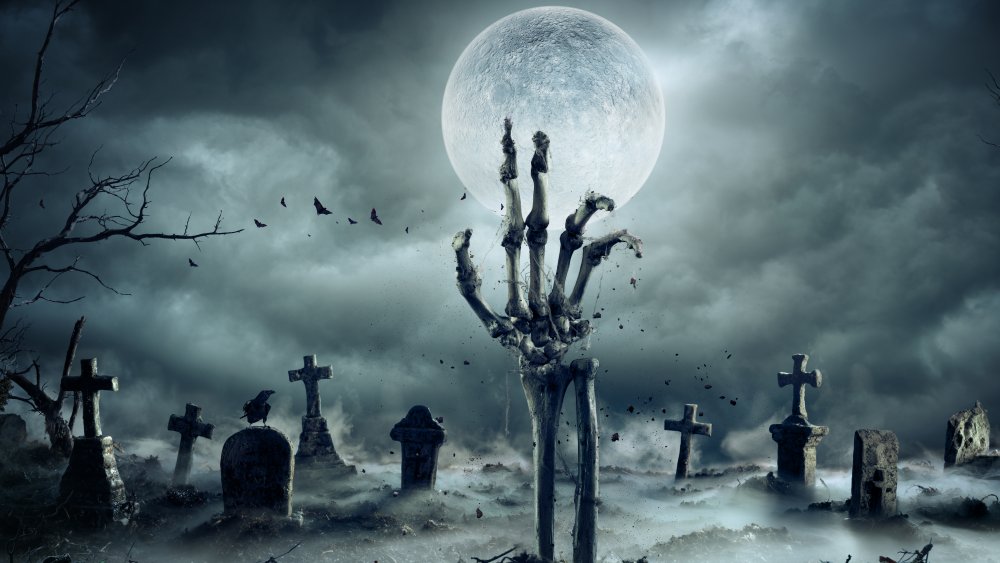
Spooky Urban Legends That Take Place On Halloween

The Bizarre Truth Of Madagascar's Ancient 'Crazy Beast'
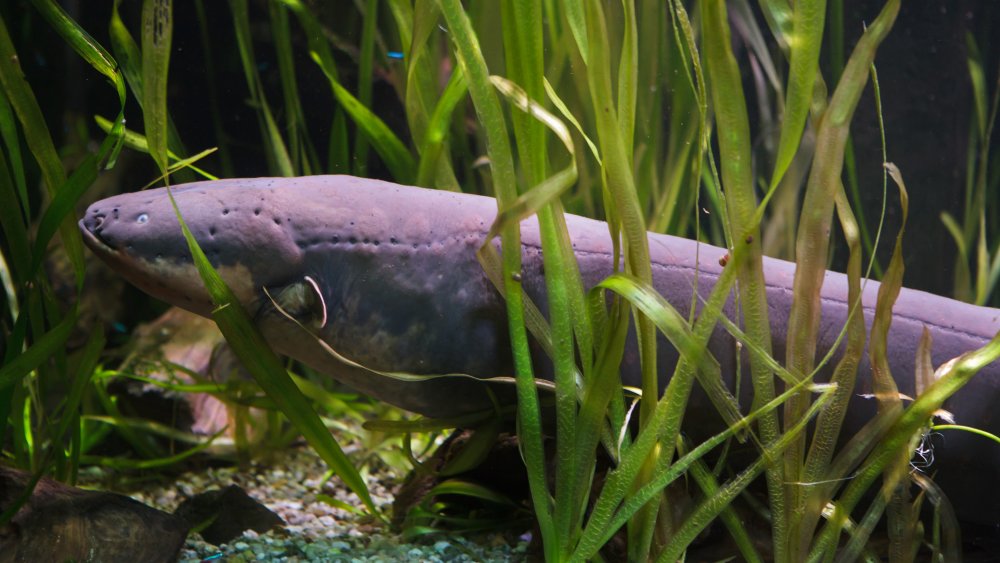
Moray Christmas, Zappy Holidays: Electric Eel Powers Aquarium's Xmas Lights
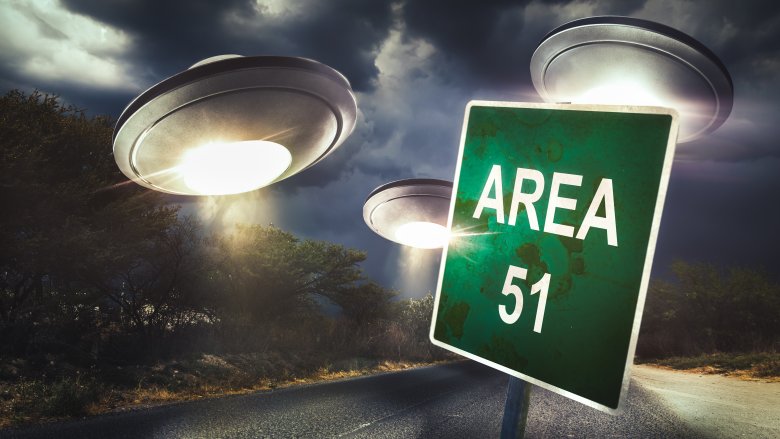
What Is A Naruto Run And How Is It Linked To Area 51?

Crazy Crimes That Deserve Their Own Movies
